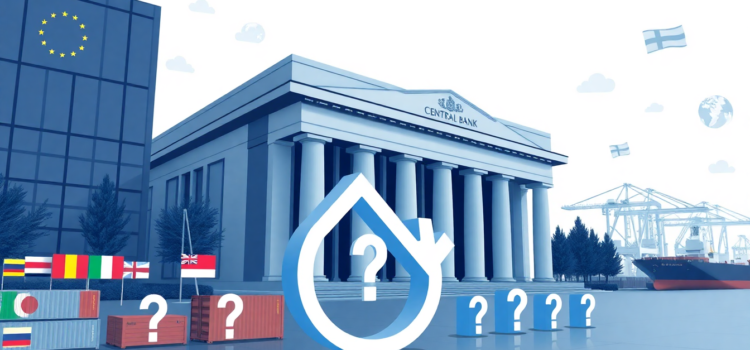
ECB Cuts Interest Rates Amidst Global Trade Tensions – Will Others Follow?
In an effort to counter growing economic uncertainties fueled by escalating global trade tensions, the European Central Bank (ECB) has announced a strategic reduction in its key interest rates. The unanimous decision among ECB Governing Council members to cut rates marks a continuation of its monetary easing policies aimed at stabilizing inflation and fostering economic growth.
Understanding the ECB Interest Rate Cut of 2025
Effective April 23, 2025, the European Central Bank interest rate cut reduces key rates by 25 basis points. As a result, the deposit facility rate stands at 2.25%, the main refinancing operations rate at 2.40%, and the marginal lending facility at 2.65%. This marks the ECB’s sixth consecutive rate reduction since June 2024.
Impact of Tariffs on Eurozone Growth
Escalating trade tensions, notably with the United States, present significant threats to the economic stability of the Eurozone. ECB President Christine Lagarde warns that these tensions could drastically slow growth. With projections of Eurozone GDP growth potentially halving from an already modest forecast, the region is navigating a precarious economic environment.
Monetary Policy Amid Global Trade Tensions
The ECB continues to reflect confidence in the ongoing disinflation process as headline and core inflation metrics exhibit signs of moderation. With inflation indicators stabilizing near the ECB’s 2% target, the challenges presented by tariffs necessitate careful monetary policy adjustments.
- ECB inflation outlook shows promise as both headline and core inflation decline.
- Wage growth deceleration and profit resilience partially absorb inflationary pressures.
- US tariffs pose significant risk to Eurozone economic projections, warranting proactive ECB monetary policies.
Will Central Banks Follow ECB Rate Cuts?
The global landscape of monetary policy is witnessing a potential alignment. Other major central banks, such as the US Federal Reserve, have actively commenced rate cuts in response to similar economic pressures, reducing their policy rate by 100 basis points since late 2024. As global markets react to these central bank maneuvers, a broader trend of monetary easing might emerge.
Effects of Interest Rate Cuts on the European Economy
The ECB’s rate cuts aim to enhance market confidence, increase consumer spending, and stimulate investment. However, such measures must be continuously assessed for their efficacy in an economically fragile landscape prone to trade disruptions.
Conclusion
The ECB’s decision to lower rates amid rising trade tensions underscores the critical role central banks play in stabilizing economies. As the Eurozone grapples with these challenges, the effectiveness of such policy measures will be pivotal in navigating the uncertain terrain of global trade dynamics. A synchronized approach among global central banks may be essential to mitigate economic vulnerabilities.
Call-to-Action
Stay informed about the global economic landscape by subscribing to our newsletter, where we delve into the intricacies of monetary policy and its impacts on economies worldwide.
FAQ
What prompted the ECB interest rate cut in 2025? The primary motivation for the ECB’s rate cut was to counteract the adverse economic impacts of heightened global trade tensions, particularly due to US tariffs.
How does the ECB’s rate decision affect the Eurozone economic outlook regarding tariffs? The rate decision aims to stabilize the Eurozone’s economic outlook by providing support against growth impediments posed by external trade tensions.
Could US tariffs reduce Eurozone growth? Yes, the ECB has already indicated that US tariffs could potentially halve the projected GDP growth of the Eurozone, exacerbating economic vulnerabilities.
Will other countries follow the ECB’s lead in cutting rates? There is potential for other countries to follow suit, especially as major central banks, including the US Federal Reserve, signal similar monetary easing strategies.
How is the ECB addressing inflation and trade tensions simultaneously? The ECB employs a data-dependent policy approach, using rate cuts to cushion the economy while aligning underlying inflation measures to its medium-term targets.










Comments